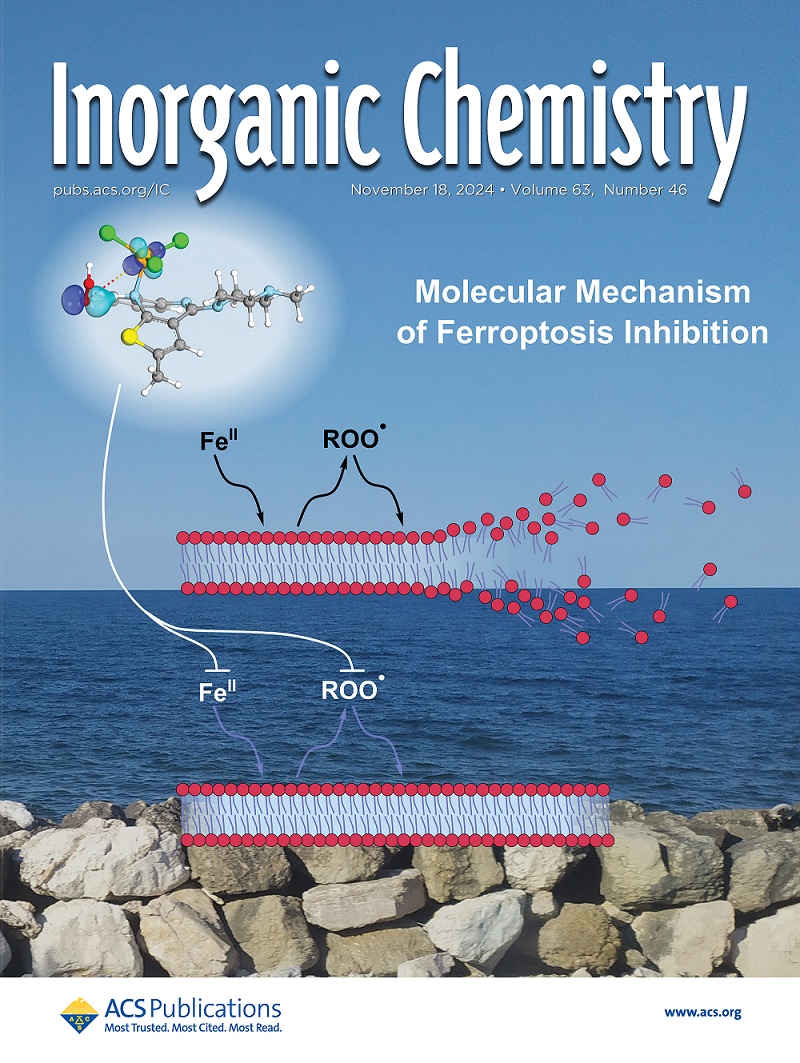Turning the Tables: Ligand-Centered Hydride Shuttling in Organometallic BIP-Al Systems.
IF 4.3
2区 化学
Q1 CHEMISTRY, INORGANIC & NUCLEAR
引用次数: 0
Abstract
The reversible storage and release of hydride equivalents remains a central challenge in the design of biomimetic redox systems. Cationic 2,6-bis(imino)pyridine organoaluminum complexes [(4-R-BIP)AlR2]+ (where R = H; R' = Me, 1a; R' = Et, 1b; R = Bn; R' = Me, 1c) and their neutral 2,6-bis(imino)-4-R-dihydropyridinate counterparts [(4-R-HBIP)AlR2] 2a-c are presented as chemically reversible hydride exchangers. Interconversion between these systems is achieved through strong reducing agents such as M+[HBEt3]- (where M = Li; Na) or LiAlH4, while powerful electrophiles like B(C6F5)3 or cationic trityl salts Ph3C+ enable the reverse transformation, with the latter providing complete selectivity. Overall, this reversible hydride exchange mirrors natural NAD(P)H/NADP+ cofactor system. These findings establish a new platform for ligand-centered hydride shuttling, where the metal fragment acts as a passive modulator─inverting the traditional roles assigned to metal and ligand.扭转形势:有机金属BIP-Al系统中配体中心氢化物的穿梭。
氢化物当量的可逆储存和释放仍然是仿生氧化还原系统设计中的一个核心挑战。阳离子2,6-二(亚氨基)吡啶有机铝配合物[(4-R-BIP)AlR2]+(其中R = H;R' = Me, 1a;R' = Et, 1b;R = Bn;R' = Me, 1c)和它们的中性2,6-双(亚氨基)-4-R-二氢吡啶对应物[(4-R-HBIP)AlR2] 2a-c是化学可逆的氢化物交换剂。这些体系之间的相互转化是通过强还原剂如M+[HBEt3]-(其中M = Li;Na)或LiAlH4,而B(C6F5)3或阳离子三烷基盐Ph3C+等强大的亲电试剂则可以实现相反的转化,后者具有完全的选择性。总的来说,这种可逆的氢化物交换反映了天然的NAD(P)H/NADP+辅因子体系。这些发现为以配体为中心的氢化物穿梭建立了一个新的平台,其中金属碎片作为被动调制器,逆转了金属和配体的传统作用。
本文章由计算机程序翻译,如有差异,请以英文原文为准。
求助全文
约1分钟内获得全文
求助全文
来源期刊

Inorganic Chemistry
化学-无机化学与核化学
CiteScore
7.60
自引率
13.00%
发文量
1960
审稿时长
1.9 months
期刊介绍:
Inorganic Chemistry publishes fundamental studies in all phases of inorganic chemistry. Coverage includes experimental and theoretical reports on quantitative studies of structure and thermodynamics, kinetics, mechanisms of inorganic reactions, bioinorganic chemistry, and relevant aspects of organometallic chemistry, solid-state phenomena, and chemical bonding theory. Emphasis is placed on the synthesis, structure, thermodynamics, reactivity, spectroscopy, and bonding properties of significant new and known compounds.
 求助内容:
求助内容: 应助结果提醒方式:
应助结果提醒方式:


